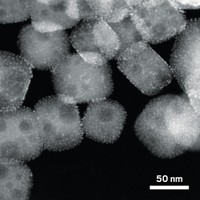Advertisement
Grab your lab coat. Let's get started
Welcome!
Welcome!
Create an account below to get 6 C&EN articles per month, receive newsletters and more - all free.
It seems this is your first time logging in online. Please enter the following information to continue.
As an ACS member you automatically get access to this site. All we need is few more details to create your reading experience.
Not you? Sign in with a different account.
Not you? Sign in with a different account.
ERROR 1
ERROR 1
ERROR 2
ERROR 2
ERROR 2
ERROR 2
ERROR 2
Password and Confirm password must match.
If you have an ACS member number, please enter it here so we can link this account to your membership. (optional)
ERROR 2
ACS values your privacy. By submitting your information, you are gaining access to C&EN and subscribing to our weekly newsletter. We use the information you provide to make your reading experience better, and we will never sell your data to third party members.
Environment
Waste Plastics Become Functional Carbon Microspheres
Plastic bags are “upcycled” into a material that could find new life printer toner, tires, and more
by Katie Cottingham
June 7, 2010
| A version of this story appeared in
Volume 88, Issue 23
Plastic grocery bags are handy and durable, but after the bread and milk are put away, most of the bags wind up in landfills. Argonne National Laboratory’s Vilas G. Pol has found a way to “upcycle” the discarded plastics into carbon microspheres, which could find new life in consumer products (Environ. Sci. Technol., DOI: 10.1021/es100243u). Pol heats waste plastics such as polyethylene bags and disposable polystyrene cups in a closed reactor. At 700 °C and about 1,000 psi, the hydrocarbons break down to hydrogen, hydrocarbon gases, and solid carbon powder, a process he monitored by mass spectrometry. Using electron microscopy, Pol found that the carbon powder is made up of 3- to 10-μm-diameter microspheres. The microspheres are paramagnetic and conductive, he notes, making them suitable for incorporation into printer toner, tires, paint, and lubricants, as well as in anode materials for rechargeable batteries. Pol is working with several companies interested in licensing the technology and developing the potential applications, he says.



Join the conversation
Contact the reporter
Submit a Letter to the Editor for publication
Engage with us on Twitter